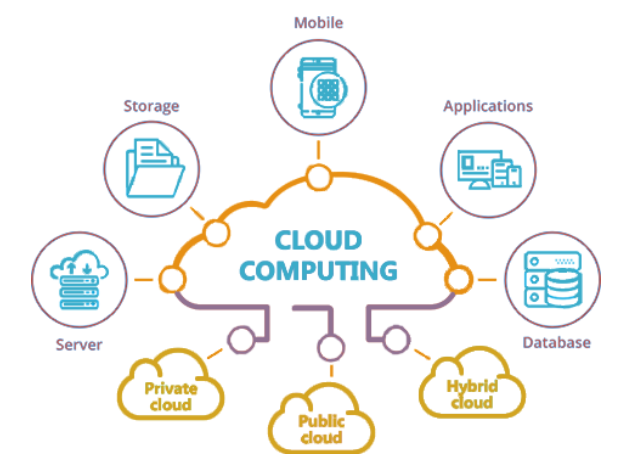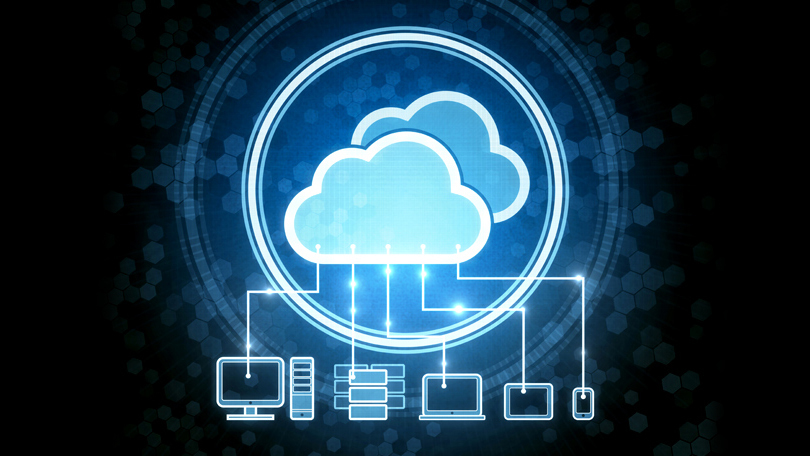The supply of computer resources through the internet, such as storage, processing power, databases, networking, analytics, artificial intelligence, and software applications, is known as cloud computing (the cloud).
Companies can get the computing assets they need when they need them by outsourcing these resources rather than purchasing and maintaining a physical, on-premise IT infrastructure. This allows for more flexible resources, faster innovation, and cost savings. A cloud migration is often linked to data and IT transformation for many businesses.
Prior to cloud computing, businesses had to purchase and manage their own IT infrastructure.
Despite the fact that cost savings drove much of the early shift to the cloud, many firms are discovering that public, private, or hybrid cloud infrastructure offers a number of advantages. Cloud computing allows agile and DevOps teams to simplify and speed their development processes.
Defining characteristics of cloud computing.
*On-demand self service
Users can utilize APIs provided by cloud computing providers to request additional resources or scale current resources as needed. Infrastructure as code solutions like Terraform and Ansible can help teams automate infrastructure provisioning in a simple way.
*Broad network access
Cloud computing resources are accessible via the internet and by a variety of consumer platforms.
In other terms, cloud services are accessible via a network—ideally, a high-speed internet connection—or, in the instance of private clouds or wireless connection (LAN). Because they affect network quality of service (QoS), network bandwidth and latency are critical features of cloud computing and broad network access.
This is especially critical when it comes to supporting time-sensitive manufacturing applications. When it comes to providing the best end-user experience, physical hardware location is crucial. Cloud computing is a big benefit since it allows enterprises to strategically deploy location-targeted hardware because it offers globally distributed physical hardware.

*Resource pooling
The multi-tenant paradigm is built into cloud computing resources.
Multi-tenancy enables multiple clients to share the same apps or physical infrastructure while maintaining their security and privacy.Multiple clients are served from the same physical resources, which is known as resource pooling.
The resource pool of providers should be large and flexible enough to meet the needs of various clients while also allowing for economies of scale. When it comes to resource pooling, it’s important to remember that resource allocation shouldn’t affect the performance of vital industrial application. A cloud infrastructure platform’s computing resources are dynamically partitioned and allocated on demand.Cloud hardware is thoroughly tuned for maximum consumption because a cloud host’s physical machines are dynamically deployed and shared among several tenants.
*Rapid elasticity
Cloud computing scalability results in lower capital expenditure on the part of cloud customers.
This is due to the fact that when a cloud customer need additional computing resources, they can simply provide them as needed, and they are immediately available. The process of scalability is more deliberate and methodical. Scalability, for example, implies that industrial companies are gradually planning for greater capacity, and the cloud for a fact can manage this scaling forwards or backwards. Users can request that their computational resources auto-scale with traffic demands, as cloud infrastructures can grow and decrease dynamically. Elasticity can occur on a per-machine basis, where an allocation of resources grows to utilize the available a on multi-machine basis or machine resources, when a program scales to several networked machines automatically.

*Measured service
Manufacturing companies pay according on how much cloud computing resources they use.
Utilizing charge-per-use features can help you get the most out of your resources.
The cloud service provider monitors, measures, and reports on cloud resource utilization, whether it’s running virtual server instances or cloud storage. The cost model is founded on the principle of “pay for what you use” payments are flexible and depending on the industrial organization’s actual usage. Providers of cloud infrastructure provide extensive consumption analytics that are used to explain charges.Amazon Web Services (AWS), for example, tracks usage in hourly or daily line items for each service category.Customers are charged for the entire amount of computer resources utilized by cloud service providers, who use a utility-style pay-as-you-go billing approach that is assessed and delivered.
Conclusion
Cloud computing makes advanced computing resources available on demand, scalable as desired, with frequent updates, and no need to purchase and sustain on-premise infrastructure.
Teams become more effective and minimize time to market with cloud computing because they can quickly access and grow services without the significant effort required to manage a traditional on-premise system.


